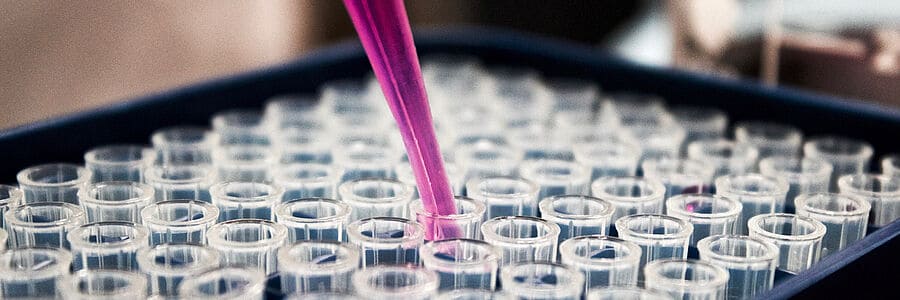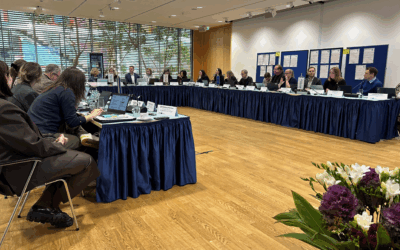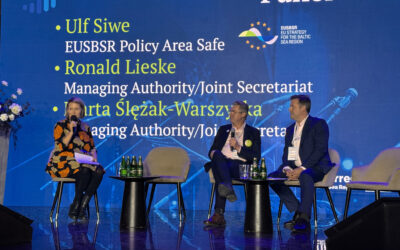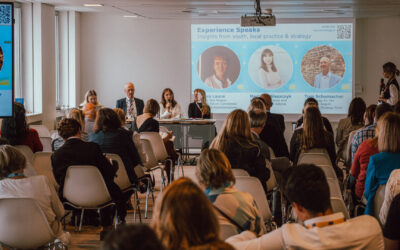A project was set into motion in 2017 with the ambitious aim to facilitate and standardize the commercialization process of new biomarkers. Biomarkers are increasingly important in disease risk prediction, diagnosis, prognosis and treatment response. The BIC project concluded in September 2020 and brought about some tools that can help medical companies to bring new biomarkers to the market faster.

©Unsplash/ Louis Reed
Excellent medicine relies on fresh research and new biomarkers
The discovery of biomarkers is giving rise to new areas of diagnostic and treatment, thereby improving human health. The global biomarkers market expects to reach a market value of $53.3 billion by 2021 of which healthcare and R&D expenditure are the key growth drivers (source: “Biomarkers Market – Global Forecast to 2021”). A biomarker is a very broad term for something that can be tested to confirm the presence or absence of a disease, e.g. proteins produced by our own cells or by invaders or antibodies which our immune system produces to fight off diseases.
Fresh research results often do not reach companies
However, the development and commercialization of biomarkers is time consuming, complicated, and expensive. At the beginning of the project, there was no proven routine to bring biomarkers to the market successfully. “Even though new biomarkers are being identified in laboratories all the time, not many make it past a scientific publication”, explains Allan Stensballe, professor at Aalborg University in Denmark. Tero Piispanen, senior executive at Turku Science Park Ltd., Finland, adds that “Researchers need guidance to select the most relevant biomarker discoveries and conduct a development plan that meets the early requirements from relevant industry partners, such as pharmaceutical and diagnostic enterprises, SMEs, and investors”.
Diverse competences and experiences are needed
These challenges have paved the way for the Biomarker Commercialization (BIC) project, led by a consortium of eight partner organisations: hospitals, universities and science parks from the Baltic Sea region. “The transnational cooperation was crucial for the success of this project,” explains Valerie Daussin from the innovation department of the University Hospital of Aalborg in Denmark, who leads the project consortium. “At the university hospital, we identified a need for developing a specific working method on biomarker development, but we couldn’t improve it on our own.” Experiences and focus on biomarker inventions amongst Danish colleagues were very limited. “The Interreg project brought together and opened doors to relevant international partners with very strong and diverse competences who were already experienced in bringing biomarkers to the market,” Valerie highlights.
Leading researchers into a product-mindset
With the objective of bringing new and better biomarkers for in-vitro diagnostics more efficiently from discovery into clinical use, the BIC consortium developed a set of tools. The purpose of the tools is to lead the researchers, such as medical students, biochemists or molecular biologists, into a product-mindset from the beginning when doing their research and to offer guidance through the highly regulated and strict development phases of the development process.
Step by step guidance: discovery – prototype – commercial launch
The first of four biomarker commercialization tools that were published in Summer 2020, is a web-based tool available on biomarker.nu, the Biomarker Commercialization Guide. The BIC Guide supports academic researchers and SMEs when developing an in-vitro diagnostic biomarker invention to a commercial product. It provides guidance through the technology readiness levels and covers the clinical, regulatory, and business aspects of the commercialization process. Eight researcher teams, six SMEs and two technology transfer offices from Denmark, Estonia and Finland tested the guide.
Janne Koskinen
R&D director at ArcDia International LtD, Turku
”The guide helps academia to grasp the regulatory requirements and to better understand the industry point of view. This BIC tool is beneficial for all start-ups and researchers aiming to take their results into clinical diagnostic use.”
Huram Konjen
CEO of Dianox, Copenhagen
“Overall, the BIC Commercialization Guide was tremendously helpful for us to organize the research and development of our technology. The process of bringing technology from idea to production stage – this is really where the BIC Commercialization Guide shines. External consultancies that offer services to help with this process can charge up to 5% equity ownership of a start-up.”
Sami Ventelä
Researcher at Turku Bioscience Centre
“It is good to remind researchers about the clinical and business aspects, especially the basic and non-clinician researchers. The focus is lost so easily when you have an interesting molecule and not much attention is given to commercial or practical aspects at that point. This tool facilitates more rational focus and development without wasting several months of lab work to something irrelevant.”
A handbook to learn from true-life pitfalls and successes
Another tool that was developed by the BIC consortium is the handbook “Best Practices and Pitfalls in Commercializing IVD-Applicable Biomarkers” written for anyone working on technology transfer. The handbook is a collection of true-life practices: examples taught by experts in the field; recommendations found in guidance, regulation or laws, as well as practices learned the hard way, i.e. repeatedly failing somewhere in the process and later adapting the process for increased success. “We conducted 75 interviews with researchers, investors, officers of technology transfer organizations, small and large companies, clinicians and cluster organizations,” tells the main author of the handbook, Piia von Lode, Innovation Manager at the University of Turku, Finland. The book also comprises experience-based input of experts from Bayer, Astra Zeneca or Genome British Columbia, who shared similar problems in developing and commercializing IVD-applicable biomarkers. The handbook includes more than 50 topics spanning development and commercialization aspects of in-vitro diagnostics biomarkers, intellectual property right issues, business models, and agreement and legal viewpoints.
Strong interest in the new knowledge
The BIC consortium organises a series of webinars around the biomarker commercialization process. So far, the webinars around the biomarker commercialization process attracted over 140 attendees from across Europe and as far as India. Attendees ranged from senior researchers and PhD students to managing directors, R&D directors and business development managers of SMEs and large companies. The most represented countries were Finland, Denmark, Estonia, Spain and the Netherlands. The BIC project ended in September 2020 with a final webinar marking the launch of the BIC toolset and continues as BiC Bridge project.
Article by Merja Tieaho and Barbara Simell (Turku Science Park Ltd), edited by Stefanie Maack (Interreg Baltic Sea Region MA/JS)






